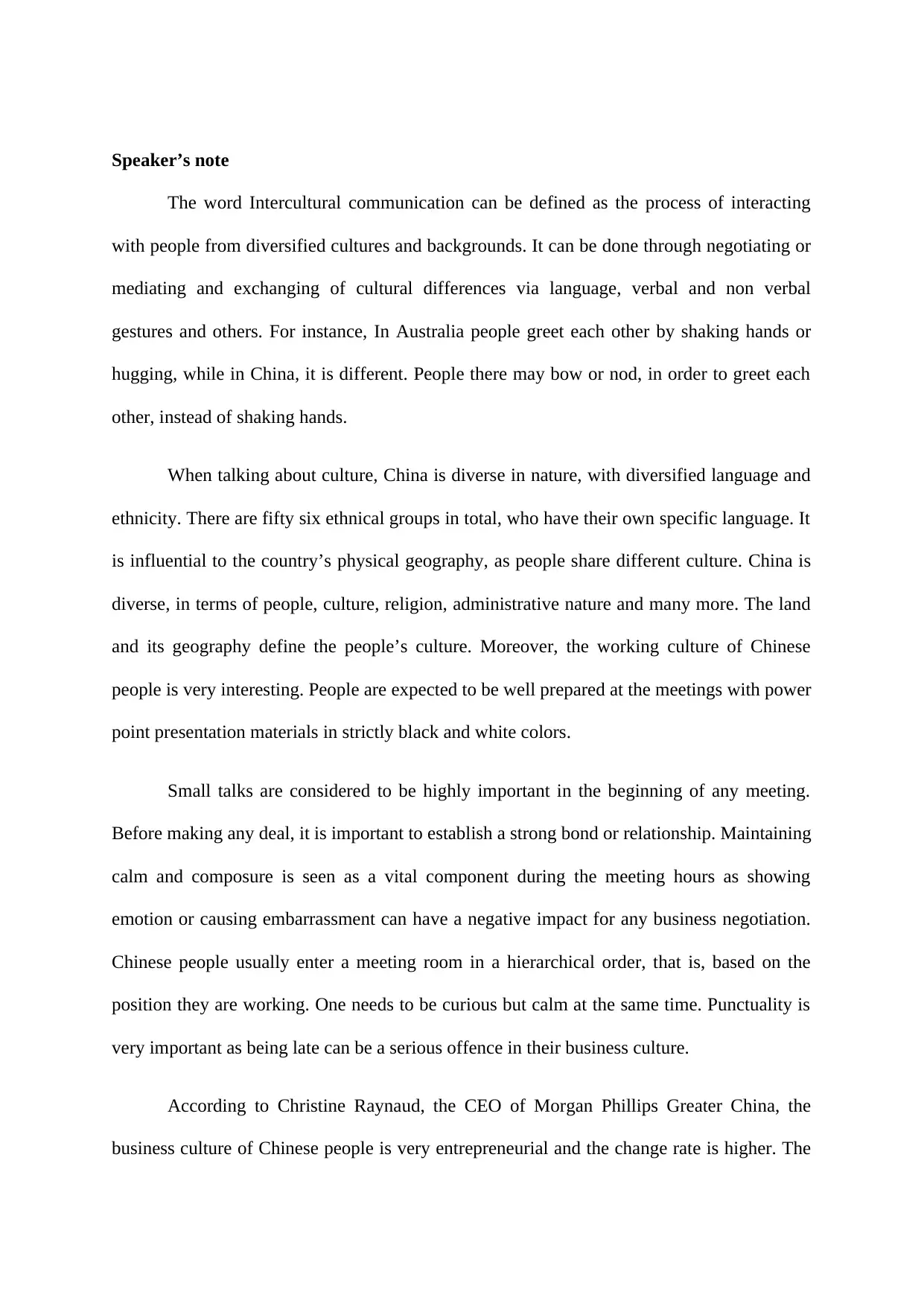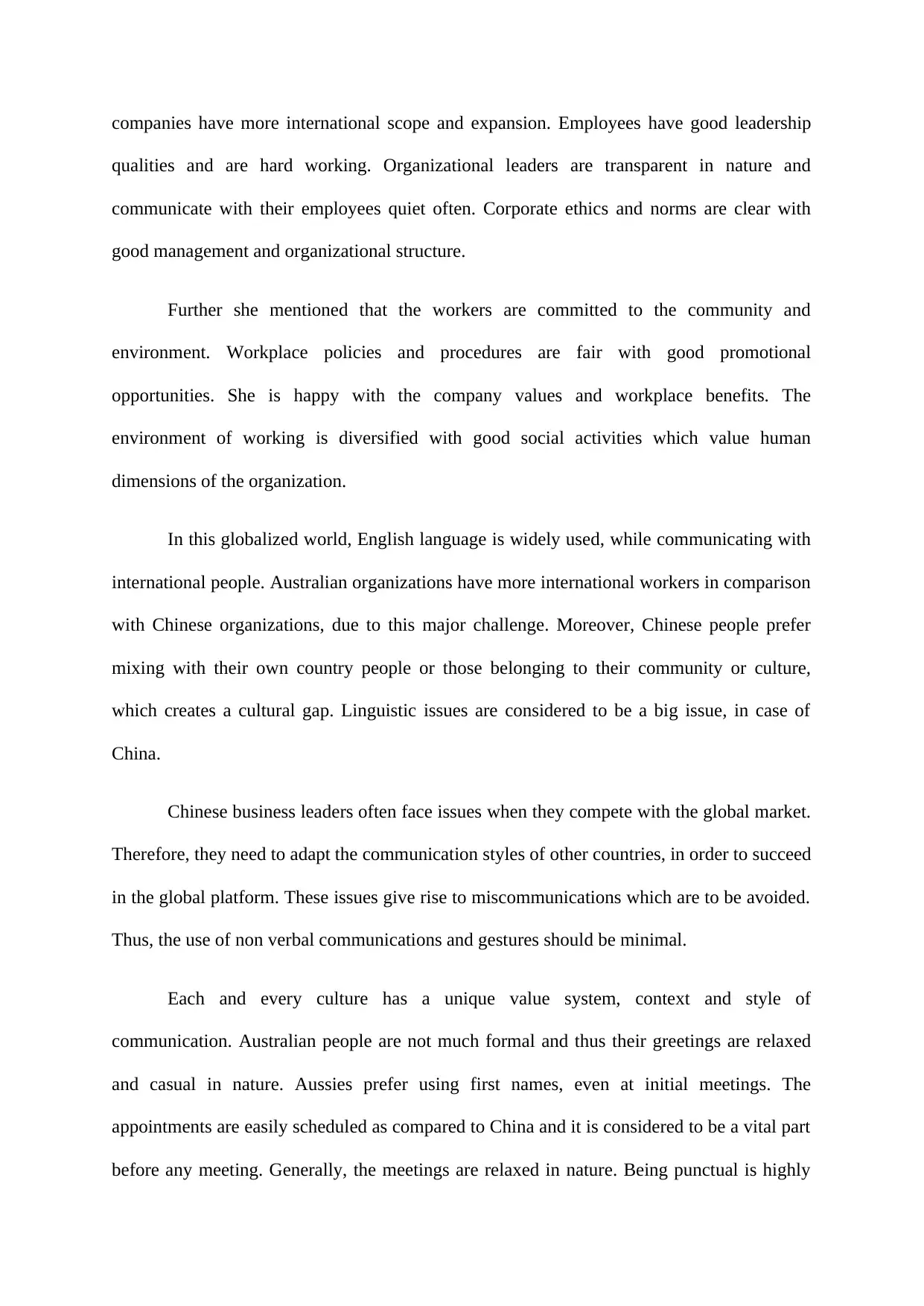Report on Intercultural Communication: China and Australia
VerifiedAdded on 2019/10/30
|3
|701
|210
Report
AI Summary
This report provides a comparative analysis of intercultural communication, focusing on the business cultures of China and Australia. It explores the significance of intercultural communication in today's globalized world, highlighting cultural differences in greetings, meeting etiquette, and communication styles. The report details the importance of non-verbal communication, linguistic issues, and the need to adapt to different cultural norms. It also includes specific examples of business practices and communication styles in both countries, such as the importance of punctuality, the use of small talk, and the preference for direct communication. Furthermore, it discusses the challenges faced by Chinese business leaders in the global market and the need to adopt communication styles of other countries to succeed. Overall, the report emphasizes the importance of understanding and respecting cultural differences to foster effective communication and build strong business relationships in the global arena.
1 out of 3









![[object Object]](/_next/static/media/star-bottom.7253800d.svg)